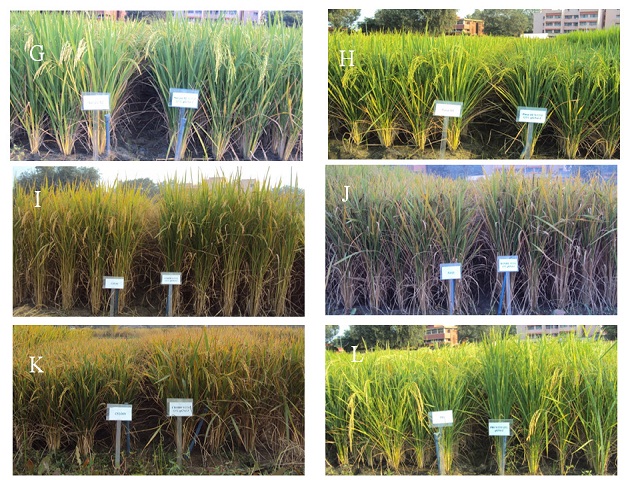Studies on Genetic variability, correlation analysis, character association and path analysis of phenotypic characteristics of twelve mega varieties of rice and its near-isogenic lines carrying high grain number per panicle QTL qGN4.1
DOI:
https://doi.org/10.5530/ctbp.2022.1.4Keywords:
Rice, QTL, qGN4.1, Genetic variability, Broad sense of heritability (H2), correlationAbstract
In order to evaluate genetic variability of agro-morphological traits and to determine the correlation between grain number and its components in rice lines, twelve near isogenic lines (NILs) along with their recipient parents as check, were grown at IARI, India (2016-18). The experiments were laid out in a randomized complete block design (RCBD) in two replications. High heritability in broad sense (H2) estimates were obtained for plant height (99.33%), total tillers (90.34%), productive tillers (88.83%), flag leaf length (92.47%), flag leaf width (91.81%), panicle length (97.61%), primary branches in a panicle (91.49%), secondary branches in a panicle (96.76%), number of filled grain (99.90%) and total grain in a panicle (99.73%) for NILs, suggested that the traits were primarily under genetic control. A joint consideration of broad sense heritability (H2) and genetic advance as percent mean expected (GAM) revealed that filled grain and total grain per panicle combined high heritability and high genetic advance as percent mean expected. Furthermore, high broad sense heritability (H2) and high GAM recorded in these characters could be explained by additive gene action. However, high estimates (H2) combined with moderate GAM recorded for plant height, total tillers, productive tillers, flag leaf length, flag leaf width, panicle length, primary branches and secondary branches in a panicle could be due to non-additive gene effect. Grain number per panicle recorded positive correlation with primary branches per panicle (r=0.80191), secondary branches of panicle (r=0.81996) and flag leaf width (r=0.55683). The result indicated that there is a strong possibility that selection based upon primary/ secondary branches per panicle and flag leaf width could be highly effective for improved yield in case of rice.



